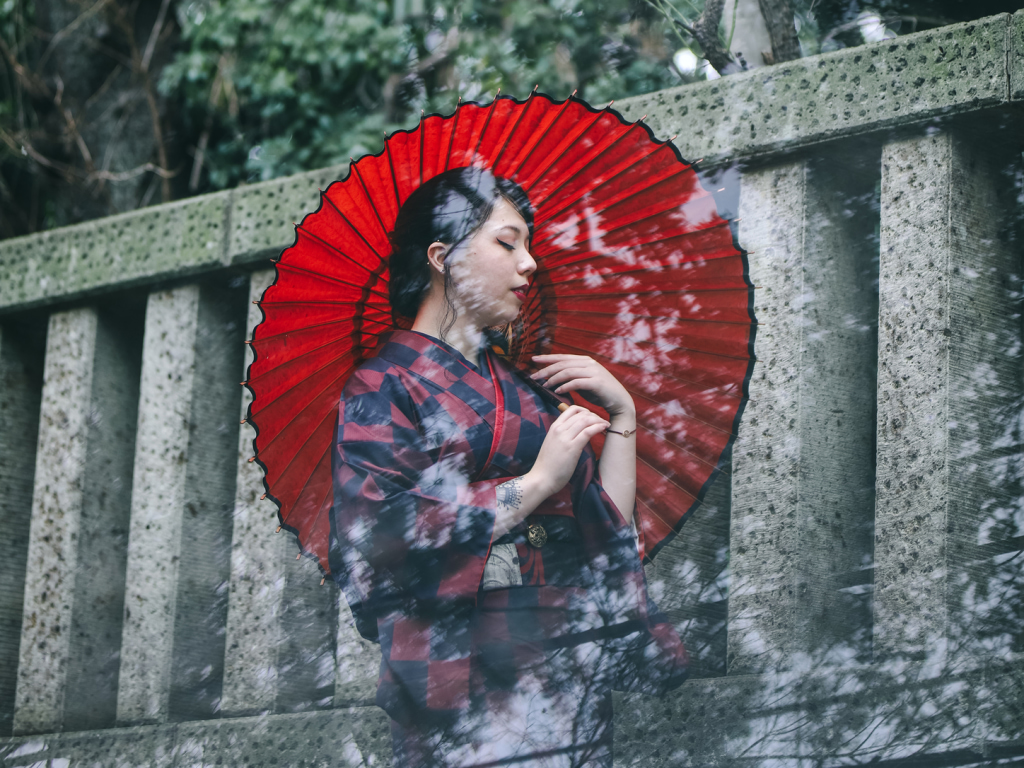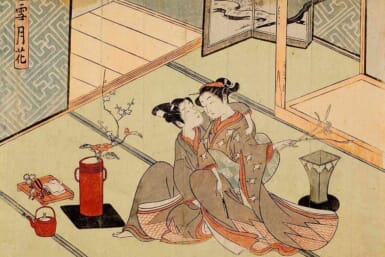For one day in Kanazawa last December, I strolled through the historic town wearing a gorgeous Kaga Yuzen silk kimono, my first experience wearing the traditional Japanese garment.
Each step of the dressing process calls to mind Zen-influenced arts like the tea ceremony and kyudou – each movement is prescribed, focused and mindful. Putting on a kimono involves several layers of undergarments designed to protect the delicate silk, strategically applying padding to create a smooth, cylindrical shape (unlike Western fashion, curves are undesirable and minimized), and multiple hidden ties to keep everything in place.
The double collar of the kimono reveals little; instead, a fist-sized gap at the back of the neck has long been considered alluring (which is why maikos, apprentice geishas, leave a patch of skin unpainted at the nape of the neck).
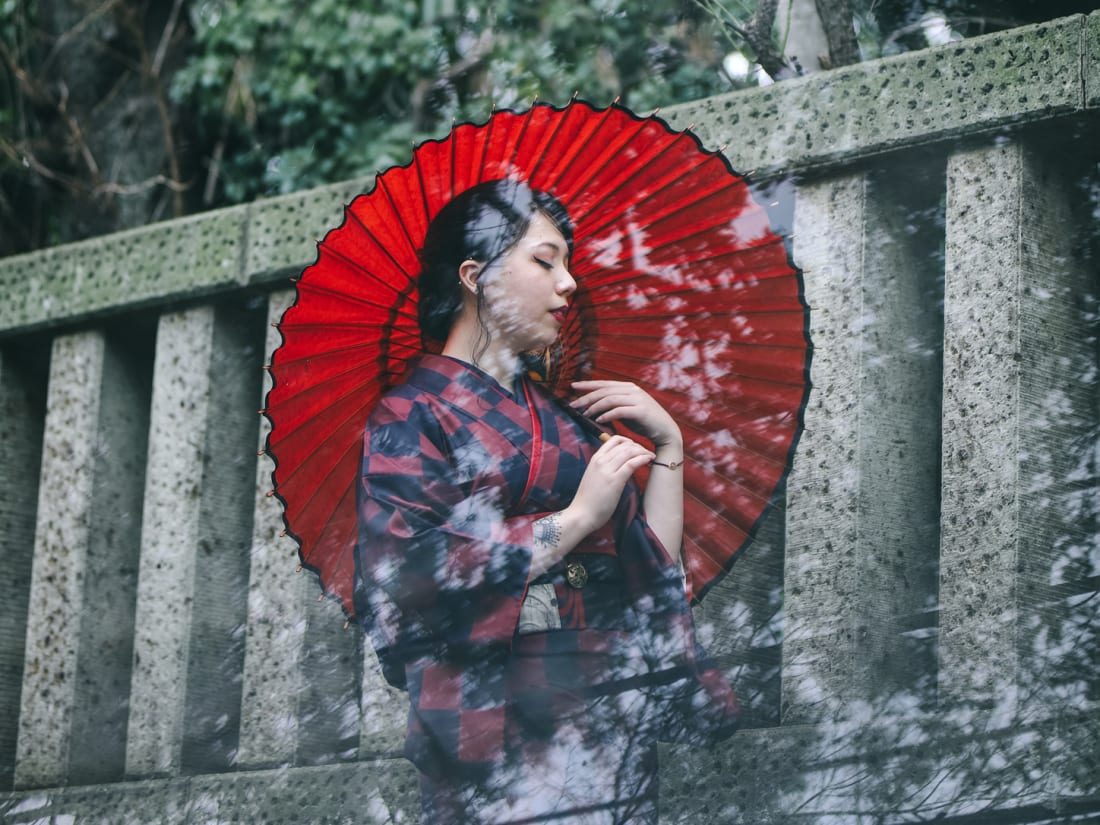
inKimono
Kimono Immersion
Slipping into the cool silk, I instantly felt more elegant in kimono – my movements became more gracious and refined, and I felt as though I’d slipped back in time as I made my way through Kanazawa’s tea districts and samurai houses. Since then, I have worn kimono for tea ceremonies in Kamakura and formal shojin kaiseki dinners at Michelin-starred restaurants in Tokyo. I immersed myself in the fascinating world of kimono dressing and fashion, meeting a number of prominent kimono stylists, artists, photographers and influencers along the way.
Nowadays, kimono may be viewed as formal, difficult to store and expensive to clean (silk kimonos must be shipped to special cleaners), but a new generation of kimono aficionados, particularly overseas ones, is giving this ancient garment a new lease on life. Several kimono shops in Japan such as Warabe Kyoto and Ginza Iseyoshi have made the kimono more accessible by dividing the kimono into two pieces.
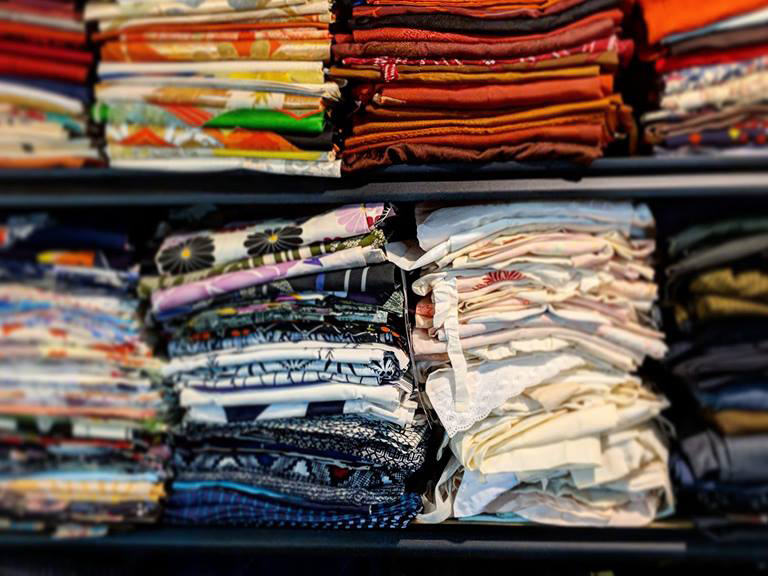
Ohio Kimono
A Matter of Convenience
Buying secondhand kimono, obi, and accessories is an economical way to explore mixing and matching different looks and seasonal elements, plus you may be rescuing these items from ending up in a landfill. In addition to shopping at shrine sales and secondhand shops, there are multiple online resources like Ichiroya Flea Market and Ohio Kimono that ship affordable, gently used kimono and yukata worldwide.
If storing and cleaning a kimono or yukata (and the numerous required dressing accessories) seems daunting, an affordable introduction is renting one. Birei Kimono and Culture in Asakusa is a convenient 7-minute walk from Asakusa Station. According to owner Meiko Kosugi, Birei stands for “beauty” and “fascinatingly elegant.” She was inspired to study kitsuke (kimono dressing) from watching her mother put on kimono every day.
“It was so beautiful to see her movements of each kitsuke process in front of the mirror in her quiet room,” she says. “Even when I was around 10 years old, I realized this is a magical skill to make people beautiful.”
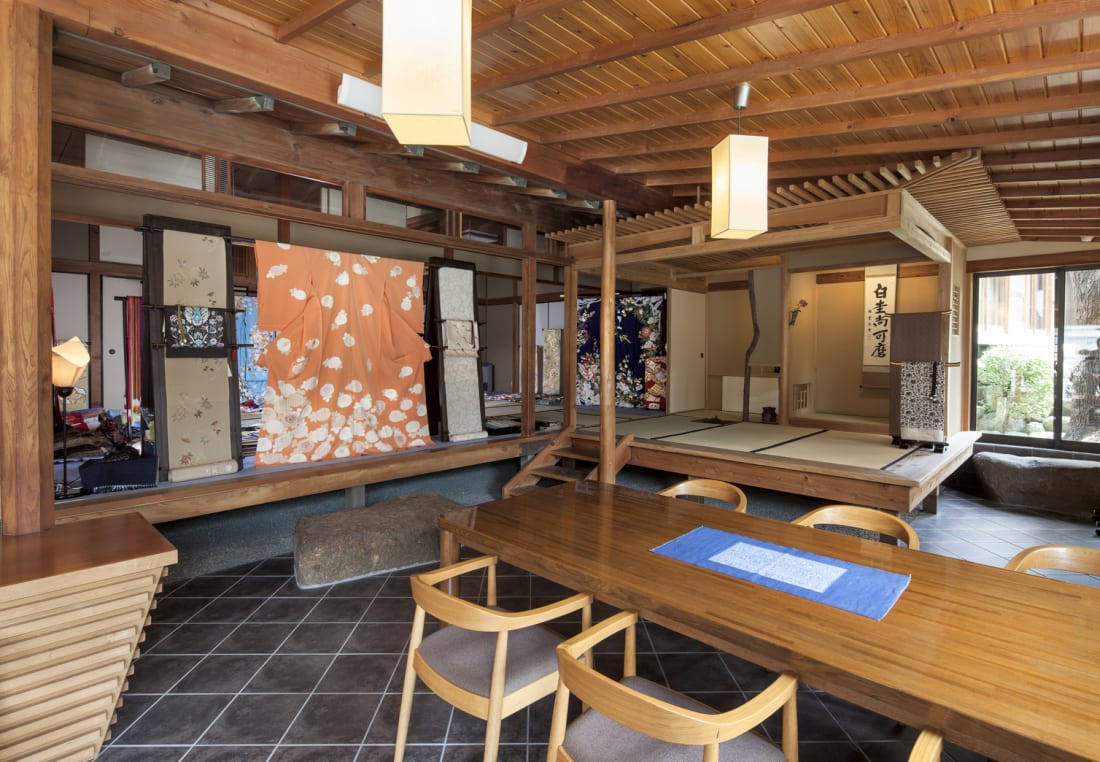
Kimono Kuroudo Miyamoto
Elegant and Refined
In Kamakura, kimono rental shops are a dime a dozen along Komachidori, but many offer lower-end polyester in loud prints. For participating in my first-ever tea ceremony (which has a particular set of rules for what kimono and accessories can be worn), I wanted something more elegant and refined. I chose to rent a gorgeous plum-colored silk kimono from the longstanding Kimono Kuroudo Miyamoto, which has been in business nearly 150 years.
“We would like to provide an authentic kimono experience and to let people know that kimono is very ecological: if stored properly, it can be worn by three generations for about 100 years,” says Mrs. Miyamoto, wife of the fourth-generation owner. “We think kimono is the only clothing people can wear across generations.”
As part of my research, I reached out to several international kimono stylists, influencers, and retailers including Anji Salz of SALZ Tokyo, Stasia Matsumoto of inKimono, Katarzyna Suchowiak of ThreeMagpies Studio and Kerry of Ohio Kimono LLC and asked them to share their memories of their first kimono experiences as well as advice for those new to kimono:
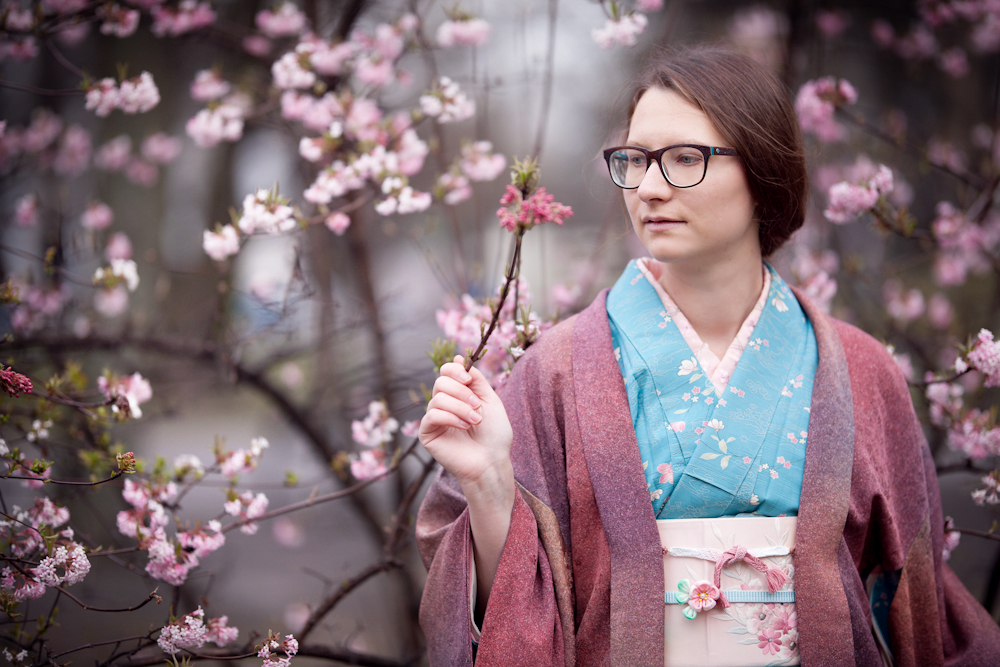
Katarzyna Suchowiak, Three Magpies Studio
Katarzyna Suchowiak, Three Magpies Studio: I got interested in Japanese culture about 15 years ago. I even met my husband at local meetups of Japanese culture fans. Around two years ago, a friend of ours gave me three boxes full of kimono and obi. I of course had to know everything about it, and so I found our local Kimono de Jack meetings and after that, things moved pretty quickly.
Anji Salz, SALZ Tokyo: About nine years ago in Kyoto, I wore kimono for the first time and remember that it felt absolutely magical. Due to the long silhouette and obi belt, it limits your movements a little, resulting in a more upright posture and makes you take smaller steps. Instantly I felt more feminine and gracious compared to when wearing Western clothing. In a way, I still feel that the kimono makes me a better person – being more aware of my surroundings, taking time and being more gentle and polite.
Kerry of Ohio Kimono, LLC: The first time I attempted to dress myself in the kimono, I needed help from my husband. The process was a lengthy one. In the USA, we did not have kimono dressing schools, nor videos on platforms such as YouTube to help.
Stasia Matsumoto: I started studying kimono almost 3 years ago. The more I knew about its history and cultural significance, the more frustrated I was with typical one-day rental shops. I thought that kimono deserved better than being treated like cosplay. I wanted to teach people about it, help them understand and appreciate it, and as a professionally trained stylist, I could actually do this.
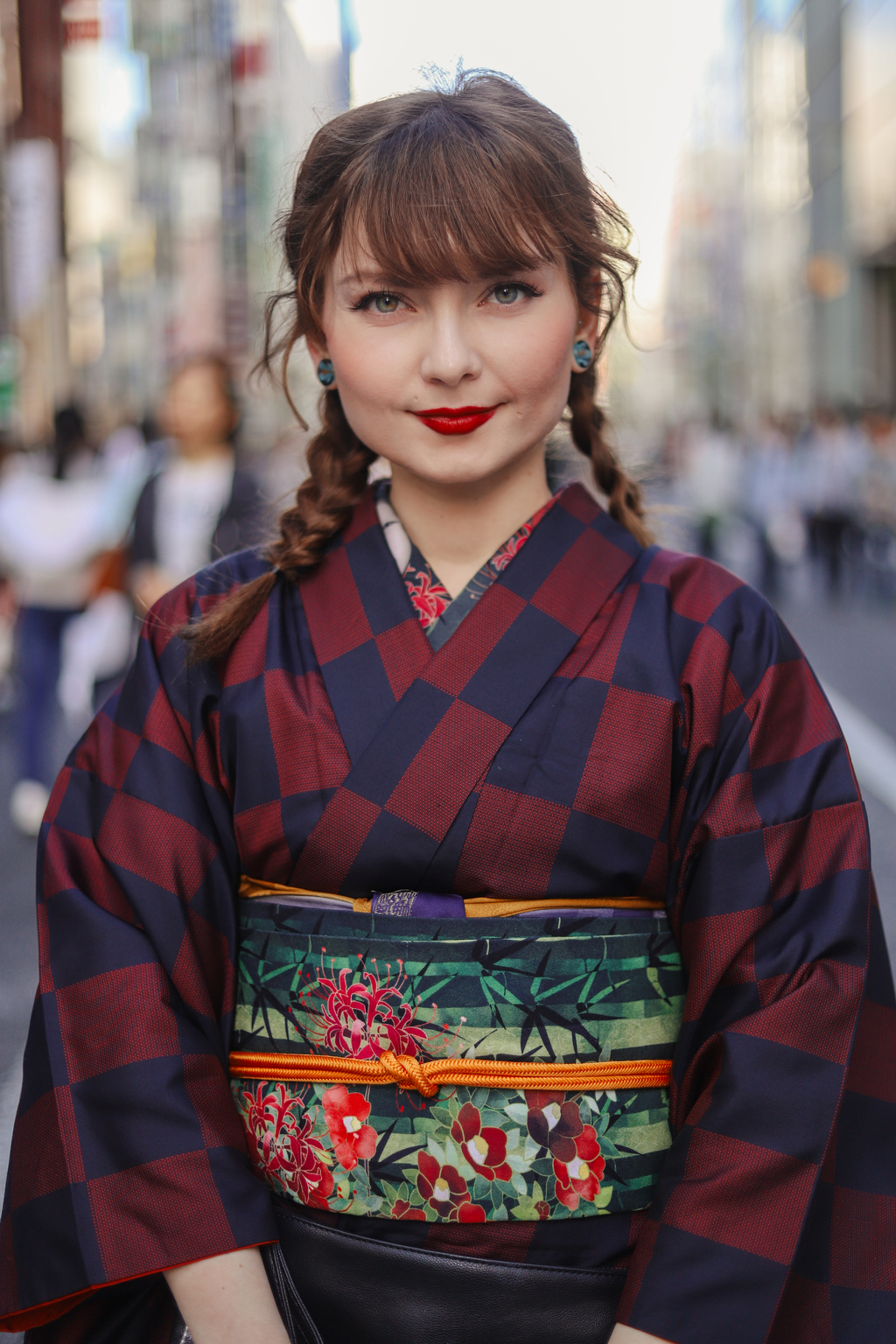
Stasia Matsumoto, inKimono
Kerry: My company first started off as a presentation and kimono dressing demonstration conducted in European-style tea rooms in the USA. The most common question asked was where people can buy an authentic kimono. It was the height of the recession in the USA, and I was in college for a business marketing degree. As a part of my graduation requirements, I was required to do an internship. However, at that time companies were requiring college students to pay the company to work for them. I decided to follow on the natural evolution of my kimono presentation company. I drafted a business plan and approached the head of the business department of my college with my proposal: launch a kimono boutique.
Anji: I had been selling vintage clothing prior, so naturally it shifted to kimonos. Sitting at the source, wearing kimono myself and being trilingual, I figured that I could contribute and support more kimono enthusiasts overseas.
Katarzyna: I graduated art school over 10 years ago and worked as designer and illustrator ever since. Kimono is an inspiration by itself, there are so many small things you can use to spice up your outfit, and you can never have enough of the accessories for it. So I guess I can say I just saw the chance and couldn’t stop myself.
Stasia: I decided to create inKimono, where I offer personalized styling with a lecture on kimono. I choose a full kimono outfit based on one’s personal style, favorite colors, any requests or ideas. There are certain rules of color or accessory coordination and it isn’t something you get to learn at tourist-oriented rental shops, where usually they have you choose your own outfit.
Katarzyna: My favorite piece that I’ve designed is always the one I’m actually making. But I will always have soft spot for my first obi ever printed – a cat playing with temari balls. Recently I made a colorful version of it as a custom order for a customer, I still love the idea and I would like to make it again in yet another way.
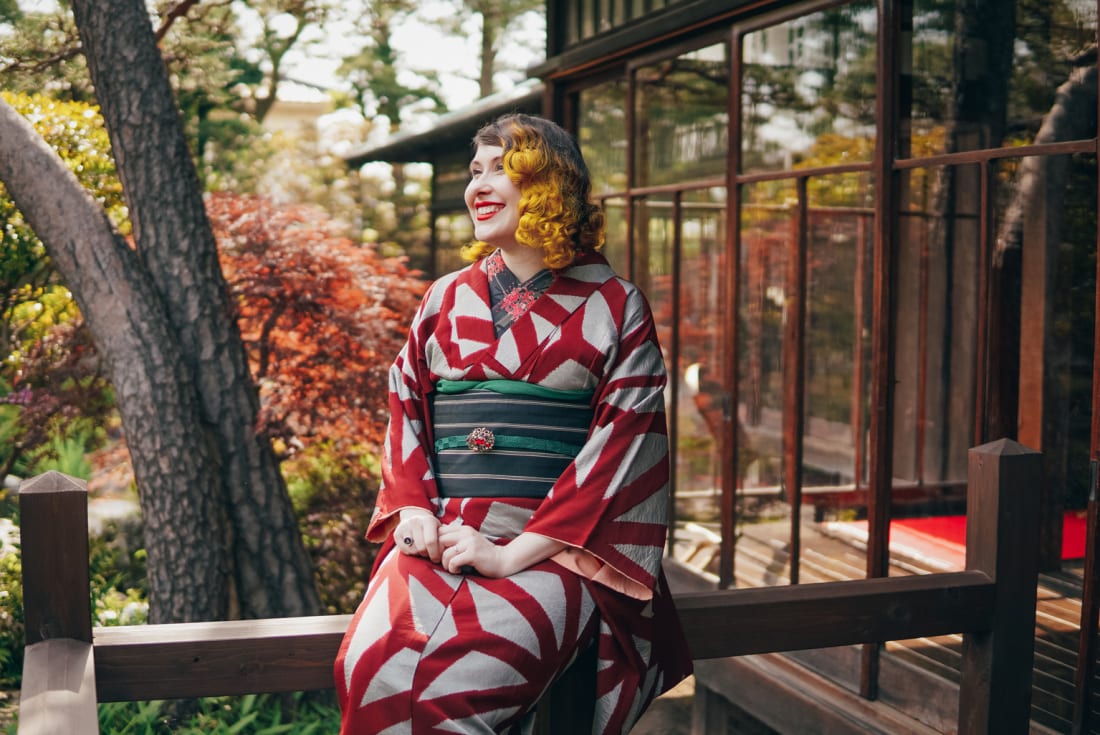
Anji Salz, SALZ TOKYO
Anji: Every time I get asked what my profession is, I answer “iro-iro” (as in all kinds of things). Apart from selling vintage and select new kimonos online, as well as my styling and shopping tours, writing columns about kimono for two magazines, partaking in and promoting events, directing photo shoots and designing my own kimono and workshops are also part of my activities.
Stasia: I usually buy kimono at vintage kimono shops, flea markets, antique stores. Many of the kimonos I have I bought from private sellers — people who wanted to get rid of kimonos that were sleeping in their closet for many years. In many cases, if they hadn’t been bought by someone, they would have ended in a landfill. I like to think that I “rescue” them, give them a new life.
Anji: Personally I am in love with modern and bold designs and colors as well as antique kimono from the 1920s and 1930s. Mixing antique kimono items with new ones, as well as using vivid colors is the essence of my styling. Currently geometric designs are my jam: checker print, stripes, houndstooth, asanoha (traditional star looking pattern), yagasuri (arrow pattern) just to name a few.
Kerry: There are different kimono dressing schools and thoughts regarding what is or is not traditional. As a result, I try to find a safe middle ground. When I do alternative kimono styles, I first look to Japanese fashion trends and take my cues from there. My favorite alternative trends are the steampunk and kimono styles which often pair with the likes of a corset with kimono.

Ohio Kimono
Katarzyna: A few years ago I moved to the countryside to have a bigger workplace and get away from the noisy city. I really enjoy having just trees in front of my windows and watching the seasons change slowly. I think it’s also important to say that I am fierce admirer of the Arts and Crafts movement and William Morris. I started my adventure with fabric printing partially because of my unyielding fascination with his creations.
Stasia: I would highly encourage everyone interested in wearing kimono to read about its history, culture, its technical side, rules of kimono dressing as well. The way it is made, the craftsmanship, patterns, fabrics, it is all very fascinating and I believe that knowing all this makes you appreciate kimono more.
Kerry: The most popular kind of kimono we sell to Americans are yukata. We recommend yukata because they are much simpler to wear for someone new to wearing traditional kimono, easier to clean, require less accessories, and are perfect for wearing to festivals and anime conventions.
Anji: Don’t be intimidated or scared to make mistakes, because those fears had me wasting many years before actually getting into kimono. Start out with yukata (cotton summer kimono) or casual daily wear kimono (perhaps affordable vintage items) and wear them as often as you can. It seems overwhelmingly difficult at first to put a kimono on by yourself, but actually it is not very difficult…. Kimono wearers are a very supportive and lovely community so always ask away and most importantly: Have fun!

